Majestic Kanchenjunga trekking straddles the border with Sikkim in the remote North East region of Nepal. Kanchenjunga is one of the most inaccessible and formidable of the entire Himalayas. The trek in is a long and often an arduous one. Kanchenjunga’s proximity deters all but the most avid mountain enthusiasts. This journey takes you through scattered settlements of thatched farmhouses with colourful flower gardens, wild coniferous woodland and on to remote Buddhist settlements where people scratch a living from the barren land. Moreover, the climax of this trek in both altitude and scenic splendor is undoubtedly the three days hike up the Kanchenjunga glacier where the views are simply overwhelming.
Tibetan write Kanchenjunga slightly different than in Nepalese as we do “Kanchenjunga”, Local inhabitant of that reason speak as “Kanchenjugha” instead. According to Tibetan old literate translation the word “Kangchendzonga” stands for “five treasures of snow.” In fact, those five holy scriptures, referring to the five individual peaks of the Kangchendzonga mountain ranges, Gold, Silver, Precious, Stones, Grain.
Further, in 1979 British Mountaineer Pete Boardman stated that the walk to the base of Kanchenjunga was the most beautiful he had ever undertaken. It is a strong contender for “The most beautiful walk in the world.”
At 8598m Kanchanjunga is the third highest peak in the world. It lies in a sensitive restricted area astride the Nepal/ Sikkim border, only a few miles from Tibet. However, our trip will avoid the restricted area and head for the Yalung glacier immediately to the south of Kanchenjunga.
The journey starts with a trek over the Mahabharat Lekh range with majestic views of both the Everest and Kanchenjunga massifs with the Arun Valley between them. Especially the trek through richly cultivated hillsides, Rhododendron forests and yak pastures below the glacier is a memorable experience. The return route heading west passes through some delightful villages of Taplejung. Finally, the panoramic views of Everest, Makalu and Kanchanjunga are magnificent on our descent.
Outline Itinerary:
01: Arrival in Kathmandu (1,300m /4,264 ft)
02: Kathmandu: sightseeing and trek preparation
03: Fly from Kathmandu to Suketar (2,420m/7938ft), trek to Lalikharka (2265m/7,431ft)
04: Lalikharka to Khesewa (2120m/6,955ft)
05: Khesewa to Mamankhe (1785m/5,856ft)
06: Mamankhe to Yamphudin (2080m/6824ft)
07: Yamphudin to Tortong (2,995m/9,826ft)
08: Tortong to Cheram (3,870m/12,696ft)
09: Cheram: Acclimatization and Rest
10: Cheram to Ramchaur (Ramche) (4,580m/15,026ft)
11: Ramchaur (Ramche) to Yalung Base Camp (4500m), back to Cheram
12: Cheram to Sele La (4290m/ 14,074ft)
13: Sele La to Ghunsa (3,595/11,794)
14: Ghunsa to Kambachen (4,050m/13,287ft)
15: Kambachen to Lhonak (4,780m/15,682ft)
16: Kanchenjunga base camp, overnight at Pangpema (5,143/16,873ft)
17: Pangpema to Lhonak
18: Lhonak to Ghunsa (3475m/11,400ft)
19: Ghunsa to Amjilosa (2,308m/7,572ft)
20: Amjilosa to Chirwa (1,270m/4,166ft)
21: Chirwa to Phurumbu (1,549/5,082ft)
22: Phurumbu to Suketar
23: Fly to Kathmandu
24: Final departure
Arrival in Kathmandu (1,300m/4,264ft)
Kathmandu: Sightseeing and trek preparation
Fly from Kathmandu to Suketar (2,420m/7938ft), trek to Lalikharka (2265m/7,431ft)
Lalikharka to Khesewa (2120m/6,955ft)
Khesewa to Mamankhe (1785m/5,856ft)
Mamankhe to Yamphudin (2080m/6824ft)
Yamphudin to Tortong (2,995m/9,826ft)
Tortong to Cheram (3,870m/12,696ft)
Cheram: Acclimatization and Rest
Cheram to Ramchaur (Ramche) (4,580m/15,026ft)
Ramchaur (Ramche) to Yalung Base Camp (4500m), back to Cheram
Cheram to Sele La (4290m/ 14,074ft)
Sele La to Ghunsa (3,595/11,794)
Ghunsa to Kambachen (4,050m/13,287ft)
Kambachen to Lhonak (4,780m/15,682ft)
Lhonak to Pangpema to Kanchenjunga Base Camp, and overnight at Pangpema (5,143/16,873ft)
Pangpema to Lhonak
Lhonak to Ghunsa (3475m/11,400ft)
Ghunsa to Amjilosa (2,308m/7,572ft)
Amjilosa to Chirwa (1,270m/4,166ft)
Chirwa to Phurumbu (1,549/5,082ft)
Trekking from Phurumbu to Suketar
Fly to Kathmandu, transfer to hotel
Final departure
More about Kanchenjunga Trekking
Kanchenjunga trekking is the wilderness off the beaten track in Nepal. Kanchenjunga is the third highest mountain in the world. The Kanchenjunga Mountain range covers the eastern part of Nepal and India. Kanchenjunga trekking route is opened for foreigners for trekking in only 1988. Actually Kanchenjunga is a remote and undeveloped area as compared to other trekking destinations of Nepal. However Kanchenjunga treks is a really paradise for the adventure lovers. Here trekkers get an opportunity of a great walking through terraced fields, forests of birch, bamboo and rhododendron. Himalayan bear, barking deer and the lesser panda are among the rich animal and bird life that fill most of part of Kanchenjunga trekking.
The breathtaking views of Mt. Kanchenjunga, Makalu with beautiful glaciers offers further excitement to all trekkers along this trekking trail. Besides nature the trekkers also witness culture and lifestyle of Limbus and Rais in this trail. These are two dominant ethnic groups in eastern Nepal. During Kanchenjunga treks, one is bound to have an unforgettable experience of difference that cannot be found somewhere else in the world.
Kanchenjunga trekking trail leads with amazing scenery of landscapes, alpine green woodlands, vegetation and mountains, this adventurous trek after exploring the southern base camp, and then heading to cross three high passes Mirgin, Tamo-la and Simion-La at above 4,500 m, on reaching the top fantastic views of Makalu, Baruntse, and Chamlang.
After Simion La, walk descends gently to Tamo La at 4,560 m with grand view of Khumbakarna, then trail finally heads down hill towards the Buddhist area of Ghunsa, 3,480 m, Kangbachen 4,000m and then to Lhonak at 4,780 m high here with another wonderful rest day for local hike and excursion to Kanchenjunga North Base Camp also called Pangpema at 5,150 meters the highest point of this adventure.
Is lodge trek is possible in Kanchenjuga?
Although first climbed in 1955, Kanchenjunga was still restricted area for normal trekkers until the late 1980’s that restrictions were lifted to allow trekkers rather than just mountaineering expeditions to approach Kanchenjunga from Nepal. Special, restricted permits are needed to walk here as you traverse pristine conservation areas. Solo hiking is not allowed and local guides must be employed to obtain permits.
Kanchenjunga is classed as a demanding trek due to its remoteness and altitude. There are no crowds and you will meet few other trekkers. Participants should be physically fit enough to walk for at least 6 hours a day. However, because the government is emphasizing tourism in the area as part of the Great Himalayan Trail you can now walk Kanchenjunga on a tea-house basis. Staying at local accommodation, assists locals with augmenting their incomes.
Optional trekking routes length of trekking days
Nature Trail happy to tailor-make your itinerary based on your length of your stay in Nepal and dependent your strength and interest.
You can choose from the Kanchenjunga south trek, the Kanchenjunga north trek, the Kanchenjunga circuit, which visits both the north and south base camps, or we can tailor-make an itinerary for you. On all treks you will meet local Tibetan refugees, who welcome you with hospitality and smiling faces as you walk through rippled farmland, meadows and forests of pink barked rhododendrons.
Trekking and best time to trekking in Kanchenjugna area
Spring season (March to May) and autumn season (September to November) are ideal months to trek to Kanchenjunga. The temperature is not as much in the first few days of the trek, the river wouldn’t have expanded much, and above all, the trekkers will be greeted with a fine sight of the landscape. But if you make it in November, you can have the whole area to yourself as you won’t have the crowd that throngs in October. Plus, the weather will still be good enough to provide an amazing view.
January, July, and August are some of the worst months to go for a Kanchenjunga Circuit Trek.
In January, the snow and ice will prove to be a major challenge and you will seriously need mountaineering equipment. The lodges in places like Pangpema and Ramche are locked down. The temperature can go as low as – 30 Celsius. So if you’re thinking of spending a night at the base camps, don’t, because it will extremely challenging.
July and August, meanwhile, gets most of the rain and it’s not just the trekking route but the flights (of Suketar) get cancelled due to it. Trekkers can expect landslides, and such instances might completely change the face of the trail. Despite all this, the rain brings all the plans and greenery to life, making for a poor trail but a great sight of the area.
Price & Service Details
| DEPARTURE/RETURN LOCATION | Kathmandu | |||||||||
| JOIN GROUP2 | before departure from Kathmandu. | |||||||||
| SERVICE INCLUDES |
|
|||||||||
| SERVICE DOES NOT INCLUDE |
|

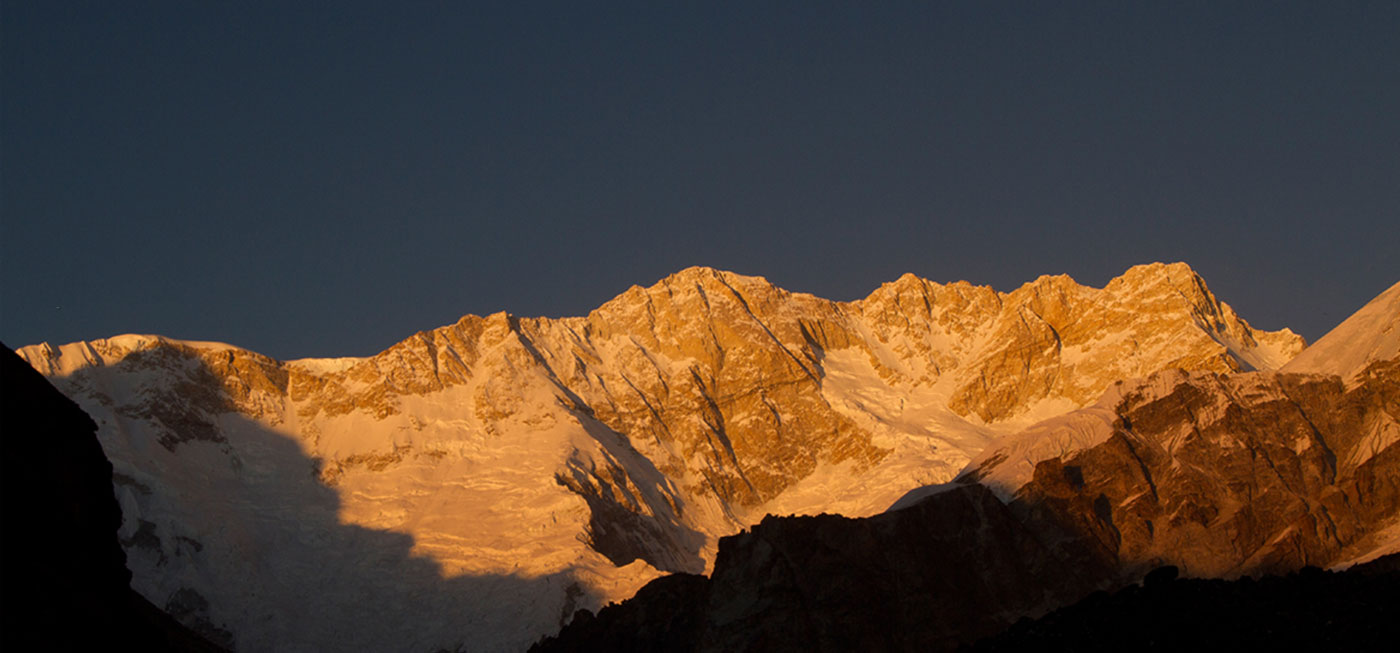
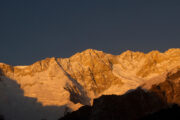
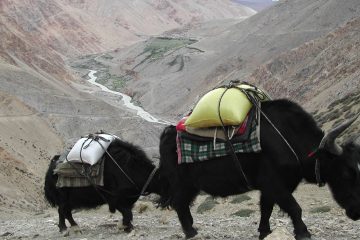
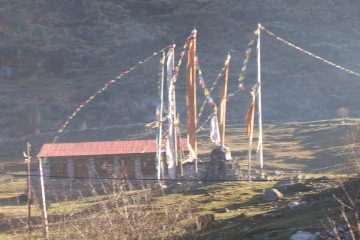
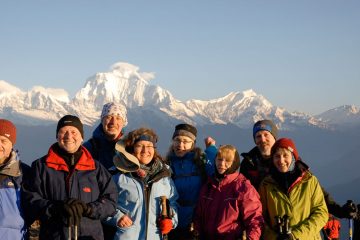
Tour Reviews
There are no reviews yet.
Leave a Review